
John Lea (born 27 January 1782, died 3 June 1862, Cincinnati, Ohio [1] ) was a lay epidemiologist most noted today for his contribution to understanding the water-borne nature of cholera. [2]

John Lea (born 27 January 1782, died 3 June 1862, Cincinnati, Ohio [1] ) was a lay epidemiologist most noted today for his contribution to understanding the water-borne nature of cholera. [2]
Lea's description of an outbreak of cholera in Cincinnati, Ohio in 1849, [3] presaged some of the techniques used later by John Snow in his famous investigation of the 1854 outbreak of cholera in London, England, including a detailed map of the residences of those struck with cholera in relation to their water supply. John Lea's proposed etiological mechanism, more closely aligned with the popular Miasma theory of his day, does not match our current understanding of the microbial nature of cholera; however, his recommended approach to limiting the spread of cholera (using rain water or boiled water) would have been an effective preventive. [4]

Cholera is an infection of the small intestine by some strains of the bacterium Vibrio cholerae. Symptoms may range from none, to mild, to severe. The classic symptom is large amounts of watery diarrhea that lasts a few days. Vomiting and muscle cramps may also occur. Diarrhea can be so severe that it leads within hours to severe dehydration and electrolyte imbalance. This may result in sunken eyes, cold skin, decreased skin elasticity, and wrinkling of the hands and feet. Dehydration can cause the skin to turn bluish. Symptoms start two hours to five days after exposure.

Epidemiology is the study and analysis of the distribution, patterns and determinants of health and disease conditions in a defined population.
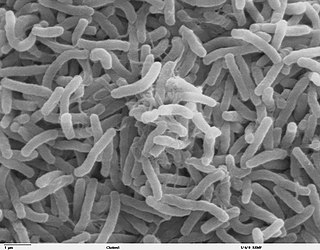
The germ theory of disease is the currently accepted scientific theory for many diseases. It states that microorganisms known as pathogens or "germs" can affect disease. These small organisms, too small to be seen without magnification, invade humans, other animals, and other living hosts. Their growth and reproduction within their hosts can cause disease. "Germ" refers to not just a bacterium but to any type of microorganism, such as protists or fungi, or even non-living pathogens that can cause disease, such as viruses, prions, or viroids. Diseases caused by pathogens are called infectious diseases. Even when a pathogen is the principal cause of a disease, environmental and hereditary factors often influence the severity of the disease, and whether a potential host individual becomes infected when exposed to the pathogen. Pathogens are disease-carrying agents that can pass from one individual to another, both in humans and animals. Infectious diseases are caused by biological agents such as pathogenic microorganisms as well as parasites.
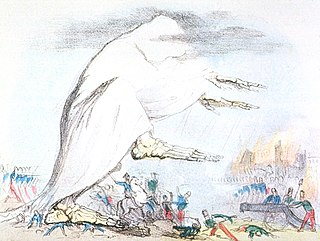
The miasma theory is an abandoned medical theory that held that diseases—such as cholera, chlamydia, or the Black Death—were caused by a miasma, a noxious form of "bad air", also known as night air. The theory held that epidemics were caused by miasma, emanating from rotting organic matter. Though miasma theory is typically associated with the spread of contagious diseases, some academics in the early nineteenth century suggested that the theory extended to other conditions as well, e.g. one could become obese by inhaling the odor of food.

William Farr CB was a British epidemiologist, regarded as one of the founders of medical statistics.
The year 1854 in science and technology involved some significant events, listed below.
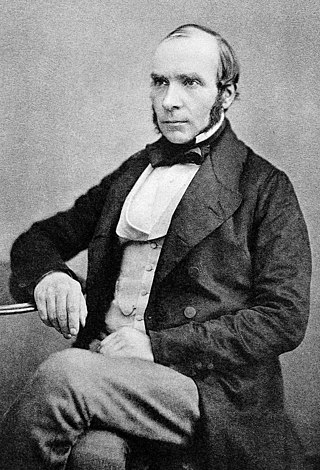
John Snow was an English physician and a leader in the development of anaesthesia and medical hygiene. He is considered one of the founders of modern epidemiology, in part because of his work in tracing the source of a cholera outbreak in Soho, London, in 1854, which he curtailed by removing the handle of a water pump. Snow's findings inspired the adoption of anaesthesia as well as fundamental changes in the water and waste systems of London, which led to similar changes in other cities, and a significant improvement in general public health around the world.
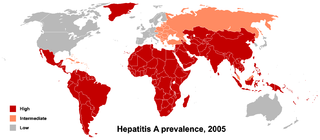
Health geography is the application of geographical information, perspectives, and methods to the study of health, disease, and health care. Medical geography, a sub-discipline of or sister field of health geography, focuses on understanding spatial patterns of health and disease as related to the natural and social environment. Conventionally, there are two primary areas of research within medical geography: the first deals with the spatial distribution and determinants of morbidity and mortality, while the second deals with health planning, help-seeking behavior, and the provision of health services.

Daniel Drake was a pioneering American physician and prolific writer.

The Ghost Map: The Story of London's Most Terrifying Epidemic – and How it Changed Science, Cities and the Modern World is a book by Steven Berlin Johnson in which he describes the most intense outbreak of cholera in Victorian London and centers on John Snow and Henry Whitehead.
Genetic epidemiology is the study of the role of genetic factors in determining health and disease in families and in populations, and the interplay of such genetic factors with environmental factors. Genetic epidemiology seeks to derive a statistical and quantitative analysis of how genetics work in large groups.

The third cholera pandemic (1846–1860) was the third major outbreak of cholera originating in India in the 19th century that reached far beyond its borders, which researchers at University of California, Los Angeles (UCLA) believe may have started as early as 1837 and lasted until 1863. In the Russian Empire, more than one million people died of cholera. In 1853–1854, the epidemic in London claimed over 10,000 lives, and there were 23,000 deaths for all of Great Britain. This pandemic was considered to have the highest fatalities of the 19th-century epidemics.

The Broad Street cholera outbreak was a severe outbreak of cholera that occurred in 1854 near Broad Street in Soho, London, England, and occurred during the 1846–1860 cholera pandemic happening worldwide. This outbreak, which killed 616 people, is best known for the physician John Snow's study of its causes and his hypothesis that germ-contaminated water was the source of cholera, rather than particles in the air. This discovery came to influence public health and the construction of improved sanitation facilities beginning in the mid-19th century. Later, the term "focus of infection" started to be used to describe sites, such as the Broad Street pump, in which conditions are favourable for transmission of an infection. Snow's endeavour to find the cause of the transmission of cholera caused him to unknowingly create a double-blind experiment.

William Budd was an English physician and epidemiologist known for recognizing that infectious diseases were contagious. He recognized that the "poisons" involved in infectious diseases multiplied in the intestines of the sick, were present in their leaks, and could then be transmitted to the healthy through their consumption of contaminated water.
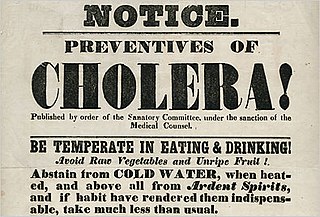
Seven cholera pandemics have occurred in the past 200 years, with the first pandemic originating in India in 1817. The seventh cholera pandemic is officially a current pandemic and has been ongoing since 1961, according to a World Health Organization factsheet in March 2022. Additionally, there have been many documented major local cholera outbreaks, such as a 1991–1994 outbreak in South America and, more recently, the 2016–2021 Yemen cholera outbreak.

The history of water supply and sanitation is one of a logistical challenge to provide clean water and sanitation systems since the dawn of civilization. Where water resources, infrastructure or sanitation systems were insufficient, diseases spread and people fell sick or died prematurely.
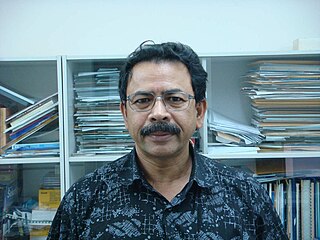
Shah Mohammad Faruque is a professor in the School of Environment and Life Sciences at Independent University Bangladesh (IUB). He is widely recognized for his research in Vibrio cholerae, the bacterium which causes the epidemic diarrhoeal disease Cholera. Among other positions, previously he was a professor at BRAC University; director of the Genomics Centre at the International Centre for Diarrhoeal Disease Research, Bangladesh (ICDDR,B), and formerly director of the Centre for Food and Water Borne Diseases in ICDDR,B. His areas of research interest include microbial genomics, bacteriophages, environmental microbiology, ecology, and evolution of bacterial pathogens, particularly those associated with waterborne and foodborne diseases. Faruque is primarily known for his work in genomics, epidemiology and ecology of the cholera pathogen, and its bacteriophages.
Contingent contagionism was a concept in 19th-century medical writing and epidemiology before the germ theory, used as a qualified way of rejecting the application of the term "contagious disease" for a particular infection. For example, it could be stated that cholera, or typhus, was not contagious in a "healthy atmosphere", but might be contagious in an "impure atmosphere". Contingent contagionism covered a wide range of views between "contagionist", and "anti-contagionist" such as held by supporters of the miasma theory.

George Davey Smith is a British epidemiologist. He has been professor of clinical epidemiology at the University of Bristol since 1994, honorary professor of public health at the University of Glasgow since 1996, and visiting professor at the London School of Hygiene and Tropical Medicine since 1999.
Thomas Gibson Lea was an American botanist who was born in Wilmington, Delaware. He was the older brother of the publisher, Isaac Lea and the younger brother of John Lea (1782-1862), who is known for his study of a cholera outbreak in Cincinnati, Ohio.